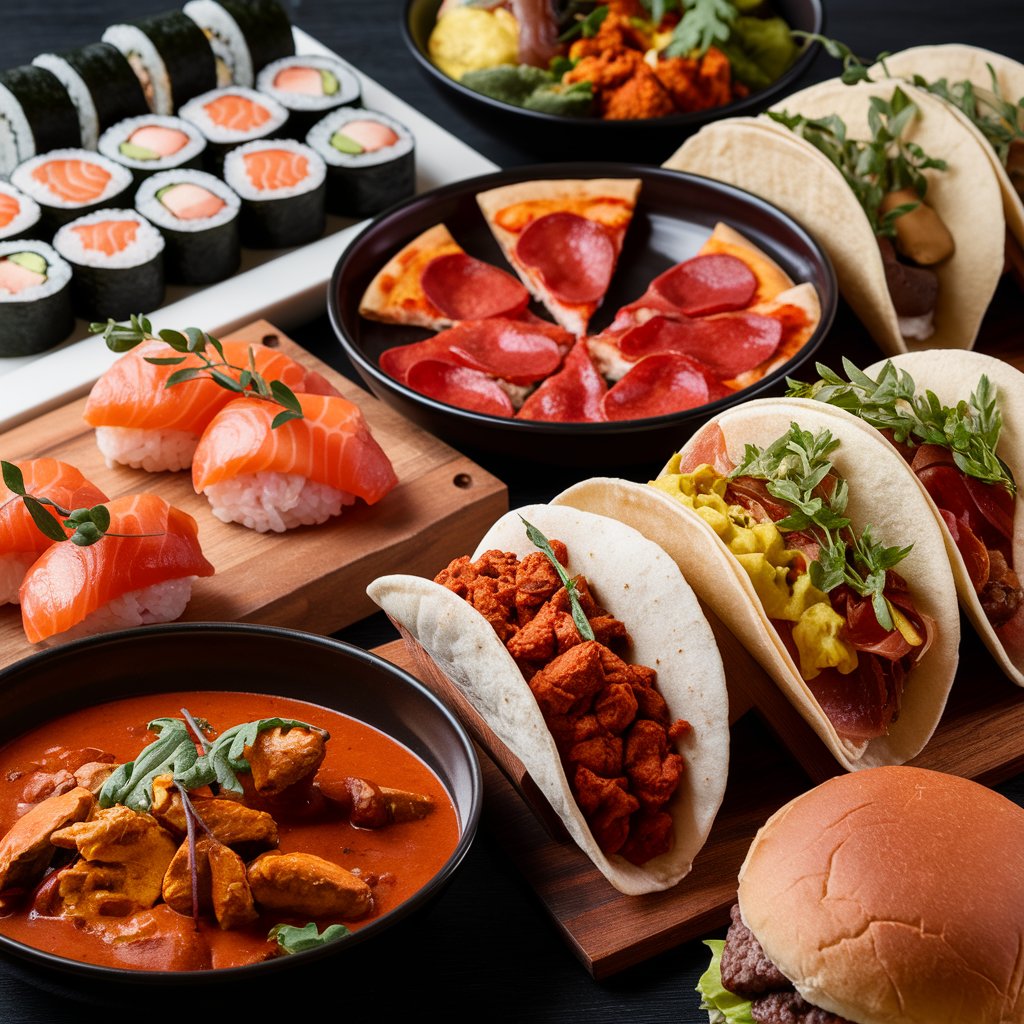Introduction Of Culinary Travel

Culinary travel offers a sensory journey that connects travelers to local cultures and traditions and focuses on exploring destinations through food. Engaging in the food culture of a place is an authentic way to experience it. The growing interest in culinary tourism reflects a need for more than just sightseeing to fully immerse oneself in a culture.
Why Culinary Travel is Important Cultural Understanding
A region’s history, geography, and values are all reflected in its food, providing insight into its culture. Travelers gain a deeper understanding of a location when they participate in culinary experiences. Tasting local dishes enhances understanding of a place’s identity.
Authentic Experiences
By interacting with local customs, culinary travel provides authentic experiences. Activities like cooking classes and market tours provide a genuine connection to the culture. This allows travelers to explore beyond typical tourist activities.
Food as a Social Experience
Food brings people together, creating shared moments and fostering social connections. Culinary travel lets travelers dine with locals or fellow tourists. These shared experiences contribute to a deeper comprehension of cultures and forming lasting memories.

Types of Culinary Travel Experiences
Street Food Tours
Street food tours allow you to try authentic dishes that often overlook. These tours take travelers through vibrant food markets and food stalls. Street food is a quick but immersive way to learn about the culture of the area.
Farm-to-Table Experiences
Farm-to-table tours connect travelers with food producers and local farmers. Visitors often prepare meals using fresh ingredients after they learn how to source and prepare food. These experiences offer a deeper understanding of food production.
Cooking Classes
Travelers can learn how to cook traditional dishes from local chefs in cooking classes. These classes allow participants to engage in hands-on regional cooking techniques. It’s a practical way to learn and experience the local food culture.
Food & Wine Pairing Tours
Food and wine pairing tours offer an opportunity to savor local wines with regional dishes. These tours educate travelers on how flavors complement each other. Wine regions like Tuscany provide a comprehensive sensory journey.
Food Festivals
Food festivals are celebrations of a region’s culinary identity, offering a wide variety of local dishes. Attending these festivals introduces travelers to regional specialties and food traditions. It’s an immersive experience of a destination’s food culture.
Fine Dining and Michelin Experiences
Fine dining offers a chance to indulge in world-class meals prepared by expert chefs. Michelin-starred restaurants provide a luxurious and refined culinary experience. These restaurants elevate dining into an art form, showcasing the best of local cuisine.

Popular Destinations for Culinary Travel
Italy
Chefs and locals celebrate Italy’s regional food diversity, from pasta in Bologna to seafood in Sicily. Unique culinary delights made with fresh ingredients are available in every region. It is possible to see Italy’s long-standing food culture on culinary tours.
Japan
Sushi, ramen, and tempura lead the exciting mix of tradition and innovation in Japanese cuisine. Food tours and cooking classes in cities like Tokyo and Osaka provide a thorough introduction. Japanese cuisine emphasizes seasonality and respect for the ingredients.
Mexico
The cuisine of Mexico includes everything from tacos to mole, with regional variations all over the country. Through markets and cooking classes, tourists can learn about the history of Mexican cuisine. Local specialties like tequila and mezcal are also central to the experience.
France
France is synonymous with gourmet food, with famous dishes and fine wines. Exceptional culinary experiences can be found in regions like Bordeaux and Provence. French cuisine is a top food destination because it combines innovative methods with rich traditions.
Thailand
Thai street food, which includes curries, noodles, and exotic fruits, is known for its bold and vibrant flavor. A food tour through Bangkok or Chiang Mai introduces visitors to Thai flavors. Travelers learn how to prepare Thai dishes at home through cooking classes.
Morocco
In dishes like tagine and couscous, Moroccan cuisine combines fresh ingredients with spices, herbs, and spices. The travel experience is enhanced by going to the local markets and trying authentic Moroccan dishes. Morocco’s culinary scene blends Arab, Berber, and Mediterranean influences.
How to Plan a Culinary Travel Experience
Researching the best destinations and experiences is key to planning a culinary trip. Look for food blogs, guides, and local experts to find authentic tours and classes. Timing your visit around harvest seasons or food festivals can enhance the experience.
Benefits of Culinary Travel
Through its cuisine, culinary travel fosters a deeper connection to the local culture. It supports local businesses and contributes to the preservation of traditional food methods. Additionally, it provides lasting memories, with unique culinary experiences often becoming highlights of a trip.
Challenges in Culinary Travel
Language barriers and food safety concerns are common challenges in culinary travel. You can minimize these issues by selecting reputable vendors and communicating effectively. Culinary travel can also be expensive, but balancing street food and fine dining helps manage the budget.
Conclusion
A one-of-a-kind means of experiencing a location’s culture through food is through culinary travel. It’s an engaging and enriching journey that leaves lasting impressions. Travelers develop a stronger connection to the places they visit by embracing local flavors.
